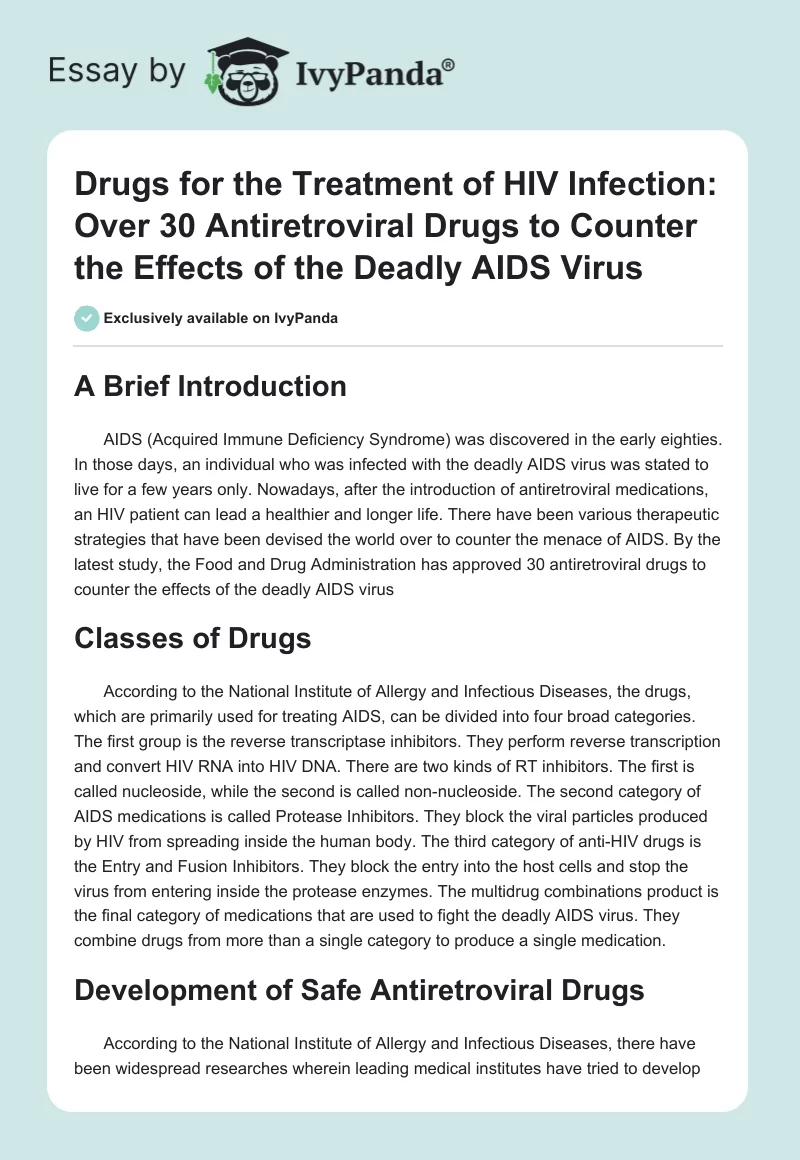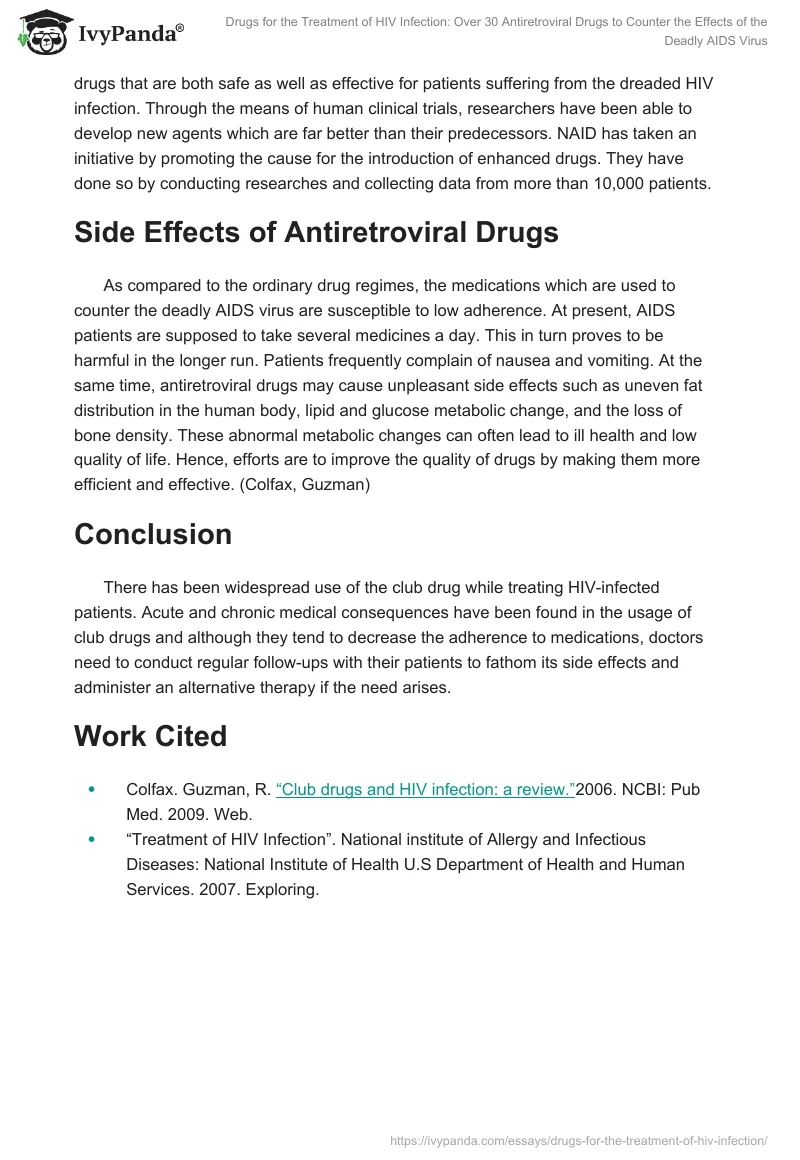A Brief Introduction
AIDS (Acquired Immune Deficiency Syndrome) was discovered in the early eighties. In those days, an individual who was infected with the deadly AIDS virus was stated to live for a few years only. Nowadays, after the introduction of antiretroviral medications, an HIV patient can lead a healthier and longer life. There have been various therapeutic strategies that have been devised the world over to counter the menace of AIDS. By the latest study, the Food and Drug Administration has approved 30 antiretroviral drugs to counter the effects of the deadly AIDS virus
Classes of Drugs
According to the National Institute of Allergy and Infectious Diseases, the drugs, which are primarily used for treating AIDS, can be divided into four broad categories. The first group is the reverse transcriptase inhibitors. They perform reverse transcription and convert HIV RNA into HIV DNA. There are two kinds of RT inhibitors. The first is called nucleoside, while the second is called non-nucleoside. The second category of AIDS medications is called Protease Inhibitors. They block the viral particles produced by HIV from spreading inside the human body. The third category of anti-HIV drugs is the Entry and Fusion Inhibitors. They block the entry into the host cells and stop the virus from entering inside the protease enzymes. The multidrug combinations product is the final category of medications that are used to fight the deadly AIDS virus. They combine drugs from more than a single category to produce a single medication.
Development of Safe Antiretroviral Drugs
According to the National Institute of Allergy and Infectious Diseases, there have been widespread researches wherein leading medical institutes have tried to develop drugs that are both safe as well as effective for patients suffering from the dreaded HIV infection. Through the means of human clinical trials, researchers have been able to develop new agents which are far better than their predecessors. NAID has taken an initiative by promoting the cause for the introduction of enhanced drugs. They have done so by conducting researches and collecting data from more than 10,000 patients.
Side Effects of Antiretroviral Drugs
As compared to the ordinary drug regimes, the medications which are used to counter the deadly AIDS virus are susceptible to low adherence. At present, AIDS patients are supposed to take several medicines a day. This in turn proves to be harmful in the longer run. Patients frequently complain of nausea and vomiting. At the same time, antiretroviral drugs may cause unpleasant side effects such as uneven fat distribution in the human body, lipid and glucose metabolic change, and the loss of bone density. These abnormal metabolic changes can often lead to ill health and low quality of life. Hence, efforts are to improve the quality of drugs by making them more efficient and effective. (Colfax, Guzman)
Conclusion
There has been widespread use of the club drug while treating HIV-infected patients. Acute and chronic medical consequences have been found in the usage of club drugs and although they tend to decrease the adherence to medications, doctors need to conduct regular follow-ups with their patients to fathom its side effects and administer an alternative therapy if the need arises.
Work Cited
- Colfax. Guzman, R. “Club drugs and HIV infection: a review.”2006. NCBI: Pub Med. 2009. Web.
- “Treatment of HIV Infection”. National institute of Allergy and Infectious Diseases: National Institute of Health U.S Department of Health and Human Services. 2007. Exploring.


